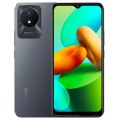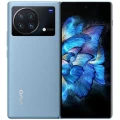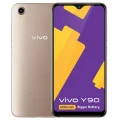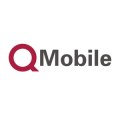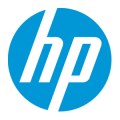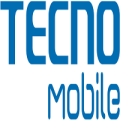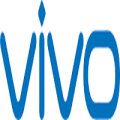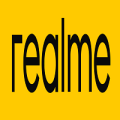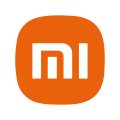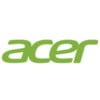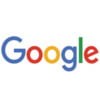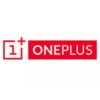- Awesome page
- Latest Mobile
- Smartphones
- Vivo Y91C
Vivo Y91C
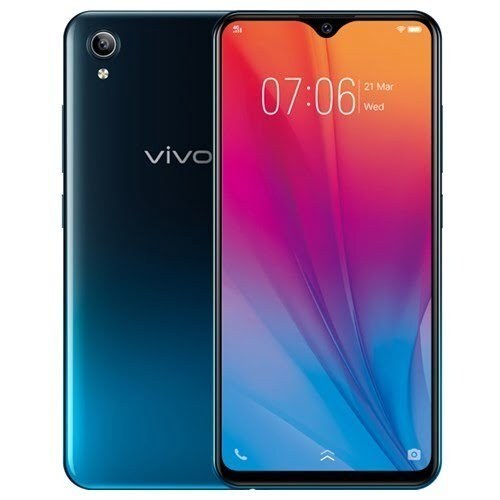


Vivo Y91C Price in Bangladesh
The Vivo Y91c Price in Bangladesh is BDT 9,990. This smartphone features a 6.22-inch IPS LCD capacitive touchscreen, providing an engaging visual experience. Powered by a 2.0GHz Octa-Core Cortex-A53 MediaTek Helio P22 (MT6762R) processor, the Vivo Y91c delivers reliable performance for everyday tasks. It comes with 2GB of RAM and 32GB of internal storage, which can be expanded up to 256GB using external storage. The device boasts a 13 MP rear camera for capturing high-quality images and a 5 MP front camera for selfies. Additionally, it is equipped with a 4030mAh Li-polymer battery, ensuring long-lasting usage throughout the day.
Specifications
General
| Model | Vivo Y91C |
| Announced | 2019, March |
| Released | February, 2020 |
| Status | Available |
| Official price | 2GB 32GB ৳9,990 |
Design
| Dimensions | 155.11 × 75.09 × 8.28 mm mm |
| Weight | 163.5 g |
| Colors |
Fusion Black, Sunset Red, Ocean Blue |
Network
| Technology | GSM / CDMA / HSPA / LTE |
| 2G Network |
GSM 500 / 900 / 1800 / 1900 |
| 3G Network |
HSDPA 850 / 900 / 2100 |
| 4G Network | LTE 850 MHz LTE 900 MHz LTE 1800 MHz LTE 2100 MHz LTE-TDD 1900 MHz (B39) LTE-TDD 2300 MHz (B40) LTE-TDD 2500 MHz (B41) LTE-TDD 2600 MHz (B38) LTE-TDD 2000 MHz (B34) |
| GPRS <strong>GPRS</strong> (General Packet Radio Service) is a packet oriented mobile data service on the 2G and 3G cellular communication system's global system for mobile communications (GSM), Generally, GPRS is used for the purpose of wireless data transfer, such as sharing pictures and videos or browsing the Internet via a mobile phone connection. | |
| EDGE <strong>EDGE</strong> (Enhanced Data GSM Environment) is a wireless network technology generally considered the next step in the 2G network offers data transfer rates up to four times faster than ordinary GSM networks, Generally, EDGE is used for the purpose of wireless data transfer, such as sharing pictures and videos or browsing the Internet via a mobile phone connection. | |
| Speed | HSPA 42.2/5.7 Mbps/LTE Cat5 150/75 Mbps |
Display
| Display Type <strong>Display Technology => </strong> A number of display technologies and types used in mobile phones => TFT (Thin Film Transistor), IPS (In-Place Switching), OLED (Organic Light Emitting Diode), AMOLED (Active-Matrix Organic Light-Emitting Diode), Super AMOLED (an even advanced version of AMOLED), Resistive Touchscreen (Resistive touchscreens contain two layer of conductive material with a very small gap between them which acts as a resistance), Capacitive Touchsceen (Capacitive touchscreen technology consists of a layer of glass coated with a transparent conductor) | IPS LCD capacitive touchscreen, 16M colors |
| Size | 6.22 inches, 96.6 cm2 (~82.9% screen-to-body ratio) |
| Resolution | 729 x1520 pixels, 19:9 ratio (~270 ppi density) |
| Features |
2.5D Curved Glass |
Camera
Main camera
| Camera Setup | Single |
| Primary <strong>Camera</strong> is able to capture photographs and usually videos, The most important characteristics of a camera are the resolution (measured in megapixels), lens focus type (fixed or automatic), higher megapixel cameras are known to capture higher quality photos, but not always a good measurement of the photos quality. |
13 MP f/2.2 |
| Features |
LED Flash, depth sensor |
| Video | 2160p@30fps, 1080p@30fps |
Selfie camera
| Camera Setup | Single |
| Primary <strong>Camera</strong> is able to capture photographs and usually videos, The most important characteristics of a camera are the resolution (measured in megapixels), lens focus type (fixed or automatic), higher megapixel cameras are known to capture higher quality photos, but not always a good measurement of the photos quality. |
5 MP f/1.8 |
Hardware
| Chipset <strong>Chipset</strong> is a group of integrated circuits designed to perform one or a more dedicated functions, often with real time computing constraints, Popular smartphones are equipped with more advanced embedded chipsets that can do many different tasks depending on their programming. | MediaTek Helio P22 (MT6762R) |
| CPU <strong>CPU</strong> (Central Processing Unit) mostly known as processors, CPU processes instructions in order to carry out certain functions that make your device operate properly. Processors are often described as the brain of computers, smartphones and tablets, Smartphones and tablets rely on processors to carry out their every task, Processors are an incredibly important factor in selecting any type of computing device, including your smartphone. | 2.0GHz Octa-Core Cortex-A53 |
| GPU <strong>GPU</strong> (Graphics Processing Unit) is a single-chip processor designed to rapidly manipulate and alter memory to accelerate the creation of images in a frame buffer intended for output to a display, This includes things such as lighting effects, object transformations, and 3D motion. | PowerVR GE8320 |
| RAM (Memory) <strong>RAM</strong> (Random Access Memory) is a type of computer memory that can be accessed randomly, any byte of memory can be accessed without touching the preceding bytes that allows information to be stored and accessed quickly from random locations. RAM is the most common type of memory found in computer systems, smartphones, tablets and other electronic devices. | 2 GB |
| Internal Storage <strong>Internal Storage</strong> is a data storage space (flash memory) mostly used in smartphones, tablets and other electronic devices where operating system, apps, music, photos, videos, files and other user data Is stored. | 32 GB |
| Sensors <strong>Sensors</strong> are electronic components that detects and responds to some type of input from the physical environment. The specific input could be light, heat, motion, moisture, pressure and location, The output is generally a signal that is converted to use in computing systems, a location sensor, such as a GPS receiver is able to detect current location of your electronic device. |
Fingerprint, Acclerometer, Gyro, Compass, Proximity |
Connectivity
| Bluetooth <strong>Bluetooth</strong> is a wireless communications technology for exchanging data between mobile phones, headsets, computers and other network devices over short distances without wires, Bluetooth technology was primarily designed to support simple wireless networking of personal consumer devices. | v4.2 with A2DP, LE |
| Infrared <strong>Infrared</strong> connectivity is an old wireless technology used to connect two electronic devices. It uses a beam of infrared light to transmit information and so requires direct line of sight and operates only at close range. | |
| USB | microUSB 2.0 with OTG, Charging and Mass Storage Function |
| GPS <strong>GPS</strong> The Global Positioning System is a satellite-based radio navigation system, GPS permits users to determine their position, velocity and the time 24 hours a day, in all weather, anywhere in the world, In order to locate your position, your device or GPS receiver must have a clear view of the sky. | Yes + A-GPS support, & GLONASS, BDS |
| NFC <strong>NFC</strong> (Near field communication) is a set of standards for smartphones and similar devices to establish peer-to-peer radio communications with each other by touching them together or bringing them into proximity, usually no more than a few inches. |
Battery
| Battery Type <strong>Battery Type => </strong> Cell phones run on various kinds of batteries depending on the manufacturer, phone size or shape and features. There are basically four types of cell phone batteries => Lithium Polymer, Lithium Ion, Nickel Metal Hydride and Nickel Cadmium. | Li-Ion (Lithium Ion) |
| Capacity <strong>Battery Capacity</strong> is a measure (typically in Amp-hr) of the charge stored by the battery, and is determined by the mass of active material contained in the battery. The battery capacity represents the maximum amount of energy that can be extracted from the battery under certain conditions. | 4030 mAh |
Vivo Y91C Review: Unveiling the Hidden Gem of Budget Smartphones
In recent years, the budget smartphone market has become increasingly competitive, with numerous brands vying for consumer attention. Amidst this crowded landscape, the Vivo Y91C stands out as a promising contender. This blog post aims to provide a comprehensive review of the Vivo Y91C, detailing its key features, performance, camera capabilities, user experience, and overall value for money. Whether you’re a tech enthusiast, mobile gamer, or a general smartphone user, this review will help you determine if the Vivo Y91C is the right choice for you.
https://www.youtube.com/watch?v=cmjWXfKG6p0&pp=ygUJVml2byBZOTFD
The Allure of the Vivo Y91C
The Vivo Y91C offers a blend of style and functionality that is hard to ignore. Priced competitively, this smartphone is designed to cater to a wide range of users, from casual smartphone users to those who demand more from their devices. With a sleek design, impressive battery life, and a capable camera, the Vivo Y91C is worth a closer look.
Design and Build Quality
Ergonomics and Aesthetics
At first glance, the Vivo Y91C impresses with its sleek design and modern aesthetics. The smartphone features a 6.22-inch Halo FullView display, providing an immersive viewing experience. The slim bezels and rounded corners add to its premium feel, making it comfortable to hold and use.
The back panel of the Vivo Y91C sports a glossy finish, available in Fusion Black and Ocean Blue. Despite being made of plastic, the build quality feels sturdy and durable. The placement of buttons and ports is intuitive, ensuring easy access and usability.
Display Quality
The display of the Vivo Y91C is one of its standout features. The 6.22-inch screen offers a resolution of 720 x 1520 pixels, which, while not Full HD, provides sharp visuals and vibrant colors. The IPS LCD panel ensures good viewing angles, making it suitable for media consumption and gaming.
Practical Design Features
One of the practical design elements of the Vivo Y91C is the inclusion of a notch, housing the front camera and sensors. This design choice maximizes the screen-to-body ratio, enhancing the overall visual experience. Additionally, the smartphone features a dedicated microSD card slot, allowing users to expand storage without sacrificing dual SIM functionality.
Performance Analysis
Under the Hood
The Vivo Y91C is powered by the MediaTek Helio P22 processor, an octa-core chipset clocked at 2.0 GHz. Paired with 2GB of RAM, the smartphone delivers smooth performance for everyday tasks such as browsing, social media, and light multitasking. While it may not be the most powerful processor in the market, it is more than capable for its price range.
Gaming Experience
For mobile gamers, the Vivo Y91C offers a satisfactory experience. While it may not handle high-end games with the highest graphics settings, it performs well with popular titles like PUBG Mobile and Mobile Legends at medium settings. The smartphone’s Game Mode optimizes performance and minimizes interruptions, providing a more enjoyable gaming experience.
Storage and Expandability
The Vivo Y91C comes with 32GB of internal storage, which may seem limited for some users. However, the inclusion of a dedicated microSD card slot allows for storage expansion up to 256GB, ensuring ample space for apps, photos, and videos.
Camera Capabilities
Rear Camera Performance
The Vivo Y91C features a 13MP rear camera with an f/2.2 aperture. In well-lit conditions, the camera captures detailed and vibrant photos with accurate colors. The autofocus is responsive, and the camera app offers various modes such as panorama, HDR, and professional mode, allowing users to experiment with different photography styles.
Front Camera Quality
The 5MP front camera with an f/1.8 aperture is designed for selfies and video calls. It performs well in good lighting, producing clear and sharp images. The AI Face Beauty feature enhances selfies by smoothing skin tones and adding subtle enhancements, making it ideal for social media sharing.
Video Recording
Both the front and rear cameras of the Vivo Y91C support Full HD video recording at 1080p. The video quality is decent, with smooth frame rates and acceptable stability. While it may not rival flagship smartphones, it is more than adequate for casual video recording and sharing.
Battery Life and Charging Speed
Long-lasting Battery
One of the standout features of the Vivo Y91C is its impressive battery life. Equipped with a 4030mAh battery, the smartphone easily lasts a full day of moderate to heavy usage. Whether you’re browsing the web, streaming videos, or playing games, the Vivo Y91C ensures you stay connected without constantly reaching for the charger.
Efficient Power Management
The smartphone’s power management system optimizes battery usage, ensuring efficient performance. The MediaTek Helio P22 chipset is known for its energy efficiency, contributing to the overall long battery life of the device.
Charging Speed
While the Vivo Y91C does not support fast charging, the standard 10W charger included in the box gets the job done. It takes approximately 2.5 hours to fully charge the battery from 0 to 100%, which is reasonable given the battery’s capacity.
User Experience
Software and UI
The Vivo Y91C runs on Funtouch OS 4.5, based on Android 8.1 Oreo. The user interface is clean and intuitive, with a range of customization options to enhance the user experience. While it may not be the latest version of Android, it still offers a smooth and responsive performance.
Special Features
The smartphone comes with several special features designed to improve usability. The Smart Split feature allows for multitasking by splitting the screen into two, enabling users to run two apps simultaneously. The Eye Protection mode reduces blue light emission, making it easier on the eyes during prolonged usage.
Overall Usability
Overall, the Vivo Y91C offers a pleasant user experience. The combination of a large display, efficient performance, and useful features makes it a reliable companion for daily tasks and entertainment.
Price Analysis
Competitive Pricing
The Vivo Y91C is priced competitively, making it an attractive option for budget-conscious consumers. Its affordability does not compromise quality, offering excellent value for money. The smartphone’s price point positions it well against similar models in the market.
Comparison with Similar Models
When compared to other smartphones in its price range, the Vivo Y91C holds its own. Models such as the Xiaomi Redmi 9A and the Realme C11 offer similar features, but the Vivo Y91C’s design, camera capabilities, and battery life give it an edge.
Value for Money
Considering its design, performance, and features, the Vivo Y91C provides good value for money. It is an ideal choice for those looking for a reliable smartphone without breaking the bank.
Pros and Cons
Pros
- Sleek and modern design
- Impressive battery life
- Decent camera performance
- Expandable storage
- Affordable price point
Cons
- Limited RAM for multitasking
- No fast charging support
- Outdated software version
Conclusion
In conclusion, the Vivo Y91C is a commendable budget smartphone that offers a well-rounded package. Its sleek design, impressive battery life, and decent camera performance make it a strong contender in the budget segment. While it has its limitations, such as limited RAM and lack of fast charging, it still provides excellent value for money.
For tech enthusiasts, mobile gamers, and general smartphone users, the Vivo Y91C is worth considering. Its blend of style, functionality, and affordability makes it a hidden gem in the budget smartphone market.
Your Thoughts?
Have you had a chance to try the Vivo Y91C? We’d love to hear your experiences and thoughts. Share your insights in the comments below and join the conversation!
By incorporating relevant keywords throughout the text and optimizing the post for search engines, we aim to drive traffic and enhance the visibility of this comprehensive review.
